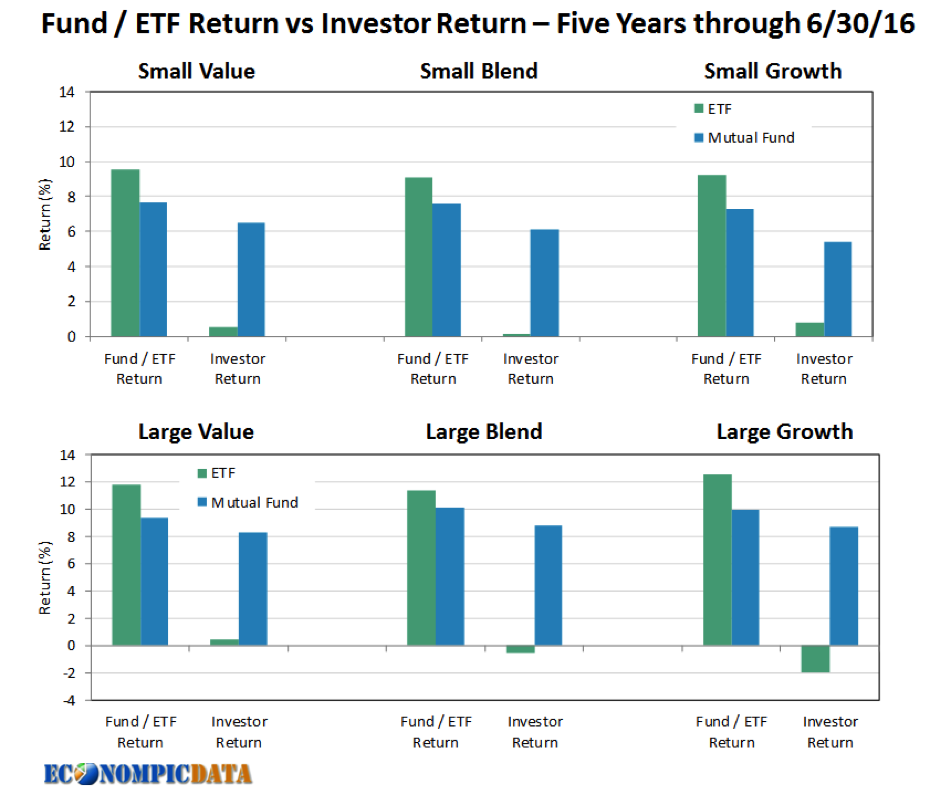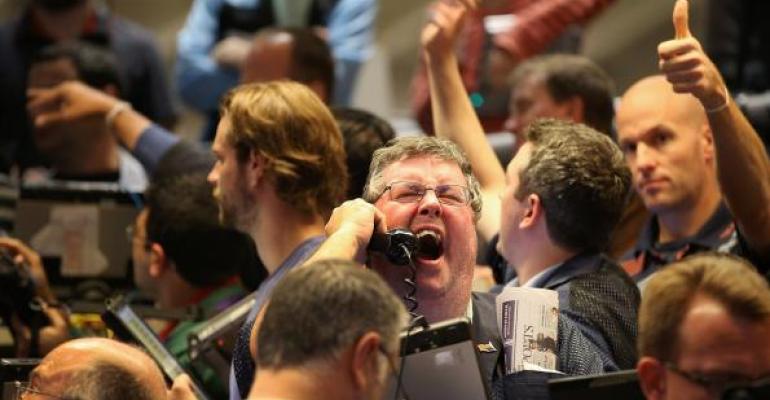By Rusty Vanneman
Exchange traded funds (ETFs) continue to dominate cash flows into investor portfolios—and for very good reasons. But ETFs have one feature that is dangerous for many investors, so it’s up to investment advisors to ensure these useful investment vehicles are properly managed.
ETFs are grabbing big chunks of market share from mutual funds, and they will continue doing so in the year ahead. Though mutual funds truly rank among the top innovations in the history of finance (they provided the opportunity for all investors to attain diversified, professionally managed portfolios at a reasonable price), ETFs are a better technology. And that’s good for investors.
There are a few reasons ETFs are better.
First, ETFs have lower costs (including lower tax costs). There’s a lot made of how investors are moving from active management (being different from benchmarks) to passive management (matching benchmarks). While technically that might appear to be right, I disagree that investors really want to switch. Active versus passive is something investors don’t really care about. If anything, most investors still prefer active investing. The real movement in investor assets, however, is from higher-cost to lower-cost portfolios. While index funds and ETFs are indeed passive, they are, more importantly, cheaper. Because of their lower costs, ETFs are winning interest and assets.
Second, ETFs don’t have bad hair days like mutual funds often do. Since ETFs are rules-based and track specific benchmarks (unlike many actively managed mutual funds) they are never subject to their portfolio managers waking up on the wrong side of the bed, dealing with personal issues, or suddenly leaving the portfolio management responsibilities for one reason or another. Instead, ETFs execute their investment processes each and every day. In turn, ETFs are dependable, reliable portfolios. They are portfolio building blocks that investors can count on.
But there’s one factor often stated as a virtue of ETFs, which is probably more of a curse than a blessing. ETFs are exchange traded. In other words, like stocks, ETFs can be traded all day long during market hours. Some people love the fact that ETFs can be traded without interruption, but for most investors, this is not an advantage.
The biggest issue with investors—even more than costs—is emotional trading/investing and chasing performance (buying stuff after it’s gone up in price and selling after it’s gone down in price).
The numbers don’t lie. Extremely active or emotional (or both) trading/investing doesn’t work. On this point, let’s first consider the track record of professional investors who are tactical money managers—meaning they can make big changes to their portfolios in terms of allocations to stocks and market risk. Bottom line: It’s not good. In fact, it’s dismal, as this recent data from Morningstar illustrates.

Keep in mind those who manage tactical funds are smart, experienced and credentialed. They also work hard. They have strong economic incentives to succeed. They really are solid investment professionals. Yet, despite their talent and resources, they can’t consistently time the market.
So, non-professional investors think they can do better? The record, regretfully, proves the contrary. This is true with mutual funds, and it’s even worse with ETFs (though to be fair, professional investors also use ETFs, and increasingly so). It appears the ability to trade ETFs intra-day completely destroys their advantages for most investors.
How is this the case? Because investors get emotional and chase performance. To examine this, we need to look at a statistic called investor return. This is the return investors actually get from an investment taking into account when and how much they buy and sell. This is the bottom line number.
The investor returns for ETFs are not good. Just look at the behavior gap for ETFs in the chart below. The behavior gap is the difference between a fund’s total return and the investor’s return in that same fund. Since investors typically buy after prices have gone up and sell after prices have gone down, investor returns are lower than fund returns. This has been well-studied among mutual funds. Yet, for ETFs, the record is much worse. Much, much worse.

For all six categories, the investor return is much lower than the total return. Investors in ETFs chase performance even more than they do in mutual funds.
So while ETFs are indeed the better investment vehicle (in most cases) than mutual funds, it appears easy trading makes them worse for most investors.
What does this all mean for investors?
- All else being equal, lower costs are good for investors. ETFs help lower costs and put money back into investors’ wallets. This is why ETFs are so popular and why they will become even more popular.
- Controlling emotional trading/investing, however, is even more important than controlling costs. Regretfully, since ETFs are so easy to trade, many investors tend to react too quickly to market noise and, in turn, hurt their investment performance.
- To help counter the problem of chasing performance, the importance of quality investment counseling and active portfolio management must be stressed.
Rusty Vanneman is Chief Investment Officer of CLS Investments, an Omaha-based registered investment advisor managing an excess of $6 billion.





